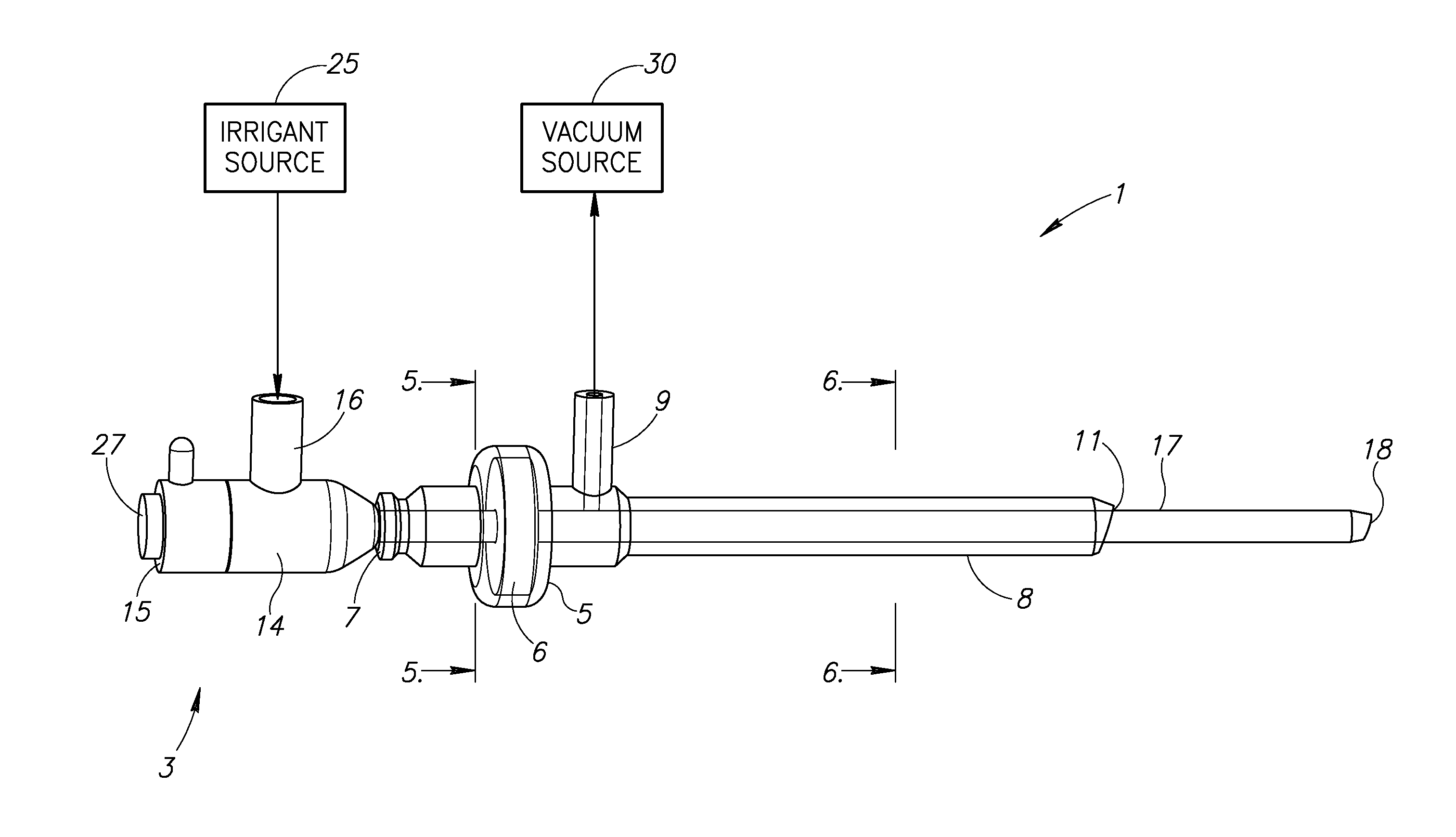Fluidic endoscope tip locator
a fluoroscope and endoscope technology, applied in the field of fluidic endoscope tip locators, can solve the problems of inability to easily image fluoroscope images, inability to femoral head or other organs or tissues of other types of endoscopic surgical sites, and inability to easily form cannulas of transparent plastic, etc., to achieve convenient connection, improve fluid and air transmission characteristics, and facilitate receipt
- Summary
- Abstract
- Description
- Claims
- Application Information
AI Technical Summary
Benefits of technology
Problems solved by technology
Method used
Image
Examples
Embodiment Construction
[0026]As required, detailed embodiments of the present invention are disclosed herein; however, it is to be understood that the disclosed embodiments are merely exemplary of the invention, which may be embodied in various forms. Therefore, specific structural and functional details disclosed herein are not to be interpreted as limiting, but merely as a basis for the claims and as a representative basis for teaching one skilled in the art to variously employ the present invention in virtually any appropriately detailed structure.
[0027]Referring to the drawings in more detail, the reference numeral 1 (FIGS. 3 and 7-9) generally designates an embodiment of a tip position determining assembly 1 of endoscopic instruments for determining fluidically the entry of a tip or tips of the instruments into an internal surgical site. Referring to FIGS. 1 and 2, the illustrated assembly 1 includes an endoscopic portal instrument or scope 2 (FIG. 1) and a trephine instrument or trephine 3 (FIG. 2)....
PUM
 Login to View More
Login to View More Abstract
Description
Claims
Application Information
 Login to View More
Login to View More - R&D
- Intellectual Property
- Life Sciences
- Materials
- Tech Scout
- Unparalleled Data Quality
- Higher Quality Content
- 60% Fewer Hallucinations
Browse by: Latest US Patents, China's latest patents, Technical Efficacy Thesaurus, Application Domain, Technology Topic, Popular Technical Reports.
© 2025 PatSnap. All rights reserved.Legal|Privacy policy|Modern Slavery Act Transparency Statement|Sitemap|About US| Contact US: help@patsnap.com



